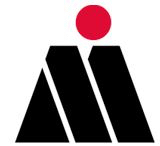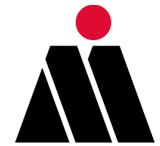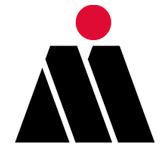Information
-
Building
-
Auditor(s)
-
Audit Participant(s)
-
Inspection Conducted on
Environmental Program
-
Stormceptor has been inspected for hydrocarbons and sediment within the past year?
-
Sanitary and sewers have been tested for contaminants within the past year?
-
Catchbasins have been cleaned within the past year?
-
Sediment traps have been cleaned in the past year ? Verify
-
Do any Sediment traps require replacement ? Record Catchbasin location and take photo of location.
- Yes- Order sediment trap / drain covers
- No- Fabric, Velco and frame in good condition
-
Recycling and wastes being disposed of in proper waste areas?
-
Recycling, Hazardous waste and Garbage bins throughout facility identifiable ?
-
Any new exhausts and equipment have been added to the modification log?
-
Waste audit and work reduction plan ( O.Reg 102) posted on communication board?
-
RPRA invoices paid? All waste classes are up to date and LDR sent to waste hauler within the year ?
-
Evidence of cleaners and chemicals being poured down drains ?
- Yes
- No visible evidence chemicals poured down drains
- Area / process needs further investigation- see notes
-
All wastes generated have been characterized for waste class within the past year?
Interceptor / Underground Storage Tank
-
Are you completing a UST inspection and dip test this month?
-
Is the UST sealed and lids free from damage ?
-
Underground Storage Tank free from damage corrosion, cracks and pipe caps and locks in place ? North East corner
-
Is there signs of errosion or damage to the structure or lining of UST ?
-
Does UST require a pump out ? Record amount of liquid inside tank and outside around tank in trench
-
Are you completing a Interceptor inspection this month?
-
Lid damaged?
-
Does INTERCEPTOR require a pump out?
Above Ground Storage Tanks, Press Pit and Sumps
-
4 oily waste water 251 L above ground storage tanks
1- beside presses on west wall 18,000 litres
3- in pit- water seperator tanks and overflow -
Free from leaks, cracks and splits on tank wall?
-
Is the area around large tank free from spills or releases ( I.e stains, discolouration, odours )?
-
General housekeeping adequate in area?
-
Is secondary containment adequate to hold 110% of contents? <br>
-
Secondary containment clear of precipitation ? (If no use the discharge from secondary containment checklist )<br>
-
Secondary containment is in good condition ?
-
Valves are free from leaking and can be turned on and off completely to stop flow ?
-
Free from signs of rusting or corrosion ? ( check seams and welds )
-
Gauges and overfill devices and alarms functioning properly ?
-
Piping for tanks is free from leaks or staining ?
-
Is the AST protected from vehicle, forklift damage ?
-
Tanks and totes clearly labelled with contents ? 251 L oily waste water - large tank, tanks in pit - 1000 litre totes labelled
-
Is support structure for the tank secure and in good condition ?
-
Is the tank properly anchored to foundation and or secured to prevent tipping ?
-
Tank free from peeling, blistering And chipping of tank coating?
-
Outside vacuum truck hook up valves for pump out have secondary containment and not leaking on lawn/garden? Caps in good condition?
-
Lighting in Press pit sufficent ?
-
Sump sides and area are not damaged and in good physical condition?
-
Press pit piping clear of excessive leaks and not damaged?
-
Press pit free from excess oil and scrap on floor?
-
Press pit conveyor functioning and no protruding scrap or metal pieces along walkway?
-
Press pit free from inappropriate storage at bottom of stairs ? ( check both ends of pit)
-
Sump clear of debris and being cleaned regularly, free of standing liquid?
Hazardous Waste Oil Storage Room
-
Room below grade with secondary containment encase of spills?
-
Are liquids enclosed to prevent spills with no open containers?
-
Are all hazardous wastes labelled? I.e Wall signs , 251 L
-
Are flammables and combustibles kept out of oil room?
-
Are empty oil drums and pails closed and stored away from sparks / heat?
-
Are nearby emergency exits clear and free from obstructions, not locked?
-
Are Spill kits, Fire Extinguishers, Emergency Equipment labeled, in place and not blocked?
-
Are hazardous wastes being picked up within 90 days? If no, a Waste Storage Notification must be completed on RPRA within 5 days
-
Is the dry sprinkler valve accessible and not blocked by oil bonaires ?
-
Drains closed and sealed?
-
Emergency exits and doors accessible ?
Tool Room- Die Wash- Hazardous Waste Storage area
-
Are pails and drums of liquid enclosed to prevent spills ?
-
Are all hazardous wastes labelled? I.e Wall signs , 331I Aerosols, Batteries NR, Lead 146 T, 232 L Resin, Lights NR, 145 I paint ink
-
Are flammables stored away from emergency exits? (Min 1.5 metres )
-
Are hazardous waste metal drums grounded ?
-
Are nearby Emergency Exits free from obstructions, not locked?
-
Are nearby Spill kits, Fire Extinguishers, Emergency Equipment labeled, in place and not blocked?
-
Sprinkler head under the stairs is free from obstructions of at least 18” and has a protective cage around the sprinkler head to prevent damage ?
-
Are hazardous wastes being picked up within 90 days? ( check manifest tracker or RPRA list of waste pick ups)
-
Does die wash require a clean out of scrap metal and sludge from bottom of die wash?
-
Is the 1000 litre tote for waste water at die wash labelled ? ( 251 L water oily waste or die wash waste water )
Roof inspection (Inspection annually at a minimum)
-
HVAC equipment is free from leaks ? I.e. No visible oil stains on rocks/ roof ?
-
Roof hatch and ladder in good condition, rungs not damaged and lock available for hatch ?
-
Are all roof drains free from debris and clear ?
-
Are all exhaust hoods free from visible discharge ?
-
Are all contractor materials and debris removed from roof ? (I.e paint cans, roofing materials )
Spill Kits
-
Available near potential spill areas?
-
Spill kit fully stocked ?
-
Spill kits identifiable ?
-
Contents, spill plan ( emergency steps) and emergency numbers posted near spill kits and up to date? ( can be inside kit)
-
Housekeeping Kits in place in Press area and Compressor rooms and at least 1/3 full ?
Outside facility and Perimeter Inspection
-
In areas where trucks and vehicles travel are storm drain covers readily accessible in case of spill?
-
Recycling and wastes going into proper outside collection bins and bins are identifiable?
-
Pavement, gravel, grass ( or snow) outside free from oil, lubricant, rust stains, no evidence of a spill ?
-
Pavement asphalt or concrete free from large cracks or potholes ?
-
Scrap bin(s) covered? (east and north side building including small bins- verify contents inside)
-
Ground / pavement free from oily parts and scrap and staining from dies?
-
Exterior free from garbage and debris?
-
Perimeter free from inappropriate storage ? ( ie. storage piles, old/ used equipment or racking, 1000 litre totes )
-
Are 1000 litre totes stored outside?
-
Do 1000 litre totes have liquid inside? (less than 4" considered residual and empty )
-
Are totes sealed ? No holes and unable to take in rain water or spill ?
-
Are stormwater discharge point free from noticable pollutants ? S.W corner 10th and 8th
-
Ditches and property clear of bio-hazardous waste/wastes that have potential to contaminant environment?
-
Propane and compressed gas cylinders are stored securely ?
-
Perimeter fencing free from damage?
-
Are monitoring wells in good condition and not damaged ? (4 wells on north side lawn, 3 above and 1 flush )
Sign-off
-
Additional information, issues or comments:
-
Signature












